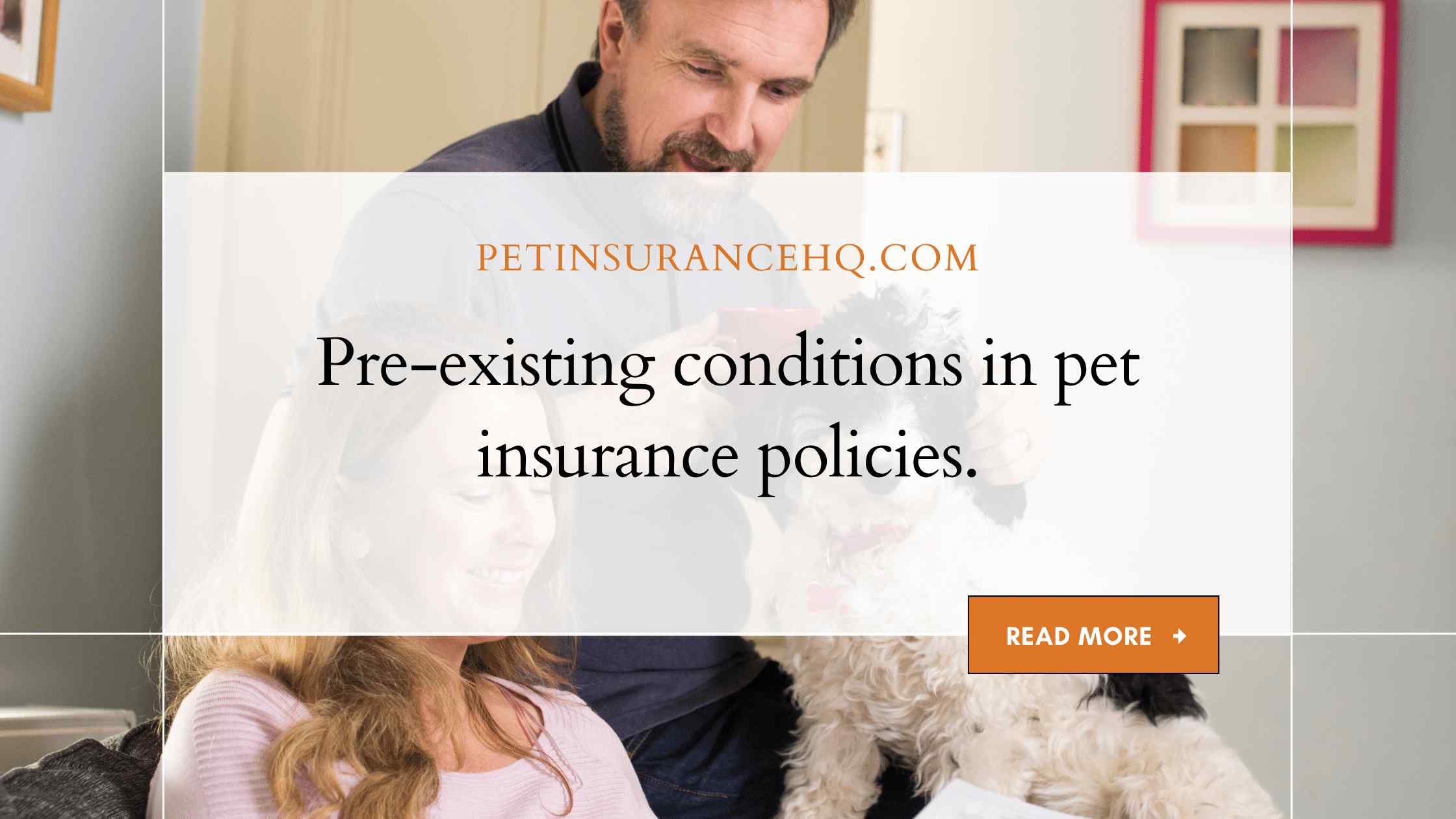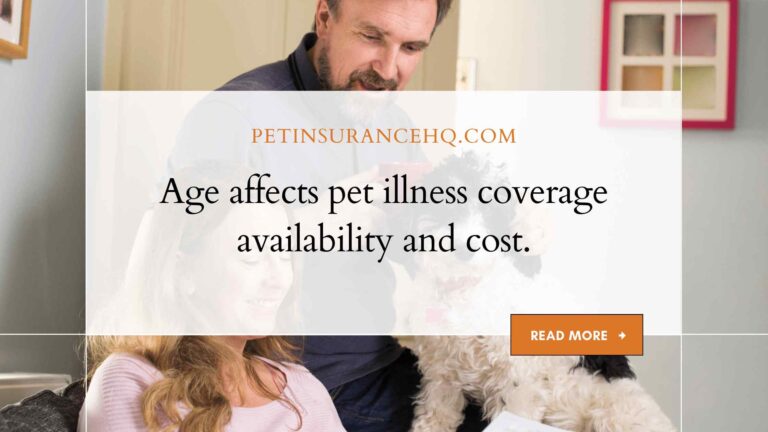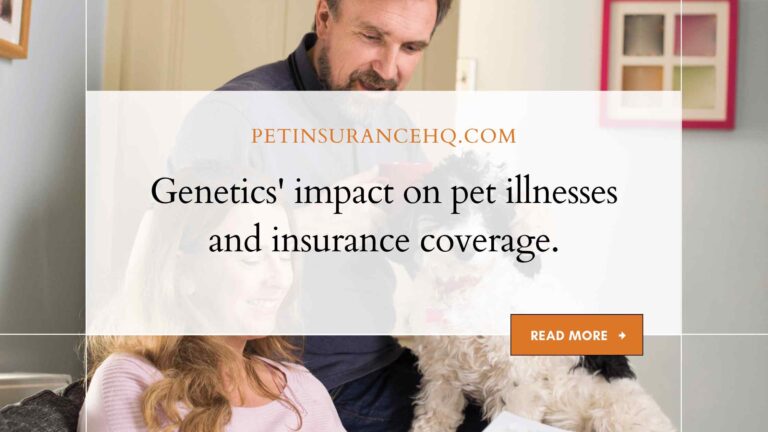Understanding pre-existing conditions in pet insurance policies
As pet owners, we all want the absolute best for our furry companions. That’s why we invest in things like healthy diets and regular check-ups at the vet. But when it comes to unexpected emergencies or chronic illnesses, the cost of care can quickly add up. Pet insurance is one solution that many owners turn to – but do you understand what pre-existing conditions are, and how they might impact your policy?
In this blog post, we’ll break down everything you need to know about pre-existing conditions in pet insurance policies so that you can make informed decisions for your furry friends’ health and wellbeing!
Introduction: What Are Pre-Existing Conditions?

As a pet owner, it’s important to understand what pre-existing conditions are and how they might affect your ability to get pet insurance coverage. Pre-existing conditions are defined as any illness, injury, or condition that your pet has before you enroll them in a pet insurance policy.
Since insurers consider pre-existing conditions to be higher risk, they often exclude coverage for these conditions from policies. That means if your pet develops a pre-existing condition after you’ve enroll them in a policy, the condition will likely not be covered by the insurer.
There are some exceptions to this rule. Some insurers may offer limited coverage for pre-existing conditions under certain circumstances. For example, some policies may cover a pre-existing condition if it’s been managed for a certain amount of time or if the pet has had no new symptoms for a certain period. In addition, some policies may provide coverage for treatment of injuries and illnesses related to pre-existing conditions.
It’s important to read your policy carefully and understand what is and isn’t covered. This way, you can make sure that you have the right coverage in place in case your pet develops any pre-existing conditions.
Why Pet Insurers Exclude Pre-Existing Conditions
There are a number of reasons why pet insurers exclude pre-existing conditions from their policies. The most common reason is that these conditions are generally not covered by the policy, as they are considered to be preexisting. In addition, many pet insurers feel that covering these conditions would be too expensive, as they would have to pay out more in claims for these conditions than for other conditions. Additionally, some pet insurers believe that excluding pre-existing conditions helps to keep premiums down, as it helps to offset the cost of covering these conditions.
For these reasons, pet insurers typically do not cover any pre-existing conditions on their policies.
How To Know If Your Pet Has Pre-Existing Conditions?
One of the most important things to look for when shopping for pet insurance is whether or not your pet has pre-existing conditions. Here are a few ways to tell:
- Review your pet’s medical records. If you’ve been taking your pet to the veterinarian on a regular basis, their records should reflect any pre-existing conditions.
- Talk to your veterinarian. They should be able to give you an idea of whether or not your pet has any pre-existing conditions that could impact their health in the future.
- Ask about genetic conditions. Some conditions are hereditary, so if there’s a history of certain conditions in your family or among your pet’s ancestors, they may be more likely to develop them as well.
- Consider your pet’s age and breed. Certain medical conditions are more common in certain age groups or breeds of animals, so that can be an indicator of whether or not your pet is at risk.
- Be aware of changes in behavior or appearance. If you notice any sudden changes in your pet’s behavior or appearance, it could be an indication of a underlying health condition.
Remember, many pet insurance companies require a complete medical history for your pet in order to offer coverage. So it’s important to be honest about any pre-existing conditions when applying for a plan.
Benefits of Pet Insurance With a Pre-Existing Condition Waiver
If your pet has a pre-existing condition, you may be worried that you won’t be able to find an insurance policy that will cover them. However, there are plenty of pet insurance policies that offer a pre-existing condition waiver. This means that your pet’s pre-existing condition will be covered by the policy, just like any other condition.
There are many benefits to having pet insurance with a pre-existing condition waiver. First of all, you can rest assured knowing that your pet will be covered in the event of an accident or illness. Secondly, if your pet does need treatment for their pre-existing condition, you won’t have to worry about the cost. And finally, if your pet’s condition worsens over time, you’ll still be covered.
So if you’re looking for comprehensive coverage for your pet, make sure to look for an insurance policy that offers a pre-existing condition waiver. It could be the best decision you ever make for your furry friend.
Happy pet insurance searching!
What Are The Limitations Of A Pre-Existing Condition Waiver?
Limitations on pre-existing condition waived vary by pet insurance company, but typically require the following:
- The condition must have been diagnosed by a licensed veterinarian prior to the policy effective date or waiting period.
- Conditions that are congenital (present at birth) or hereditary are not covered.
- Preexisting conditions that are cured and have not recurred for a certain period of time (usually 12 months) may be eligible for coverage.
- Any symptoms or conditions that occurred during the waiting period are not covered.
- Treatment for a preexisting condition may be eligible, but only up to the amount that would have been payable had the condition not existed prior to the effective date of coverage.
- The policy may include pre-authorization and/or pre- certification requirements.
- The insurer may refuse coverage or impose dollar limits on certain treatments.
Things to Consider Before Purchasing Pet Insurance for Pets With Pre-Existing Conditions
There are a few things to keep in mind before purchasing pet insurance for pets with pre-existing conditions. For starters, it’s important to understand that not all pet insurance policies are created equal. Some pet insurers will exclude pre-existing conditions from coverage, while others will provide limited coverage for these conditions.
It’s also important to be aware of the potential limitations of pet insurance when it comes to pre-existing conditions. In some cases, pet insurance may only cover a portion of the costs associated with treatment for a pre-existing condition. And in some cases, coverage may only be available for certain types of Pre-Existing Conditions (PECs), such as those that are chronic or hereditary.
It’s important to compare different pet insurance policies before making a decision. Not all pet insurance companies offer the same coverage or rates, so it’s important to shop around and compare policies before selecting one. By doing your research and shopping around, you can find an affordable policy that provides the coverage you need to protect your pet – even if they have a pre-existing condition.
Finally, it’s important to understand the implications of exclusions when it comes to pet insurance. Some pet insurance policies may exclude coverage for certain types of PECs or for certain treatments, so you should be aware of what these exclusions are before signing on with a company. That way, you can make sure you’re getting the level of coverage you need to protect your pet and plan for their future medical care.
Conclusion
In conclusion, understanding pre-existing conditions in pet insurance policies is an area of importance for pet owners. Pre-existing conditions can be costly to treat and many policies exclude them from coverage. It is important to always read your pet insurance policy carefully so you understand exactly what is covered, as well as any exclusions that may apply before signing up for a plan. Taking the time to ensure you are aware of all the details will help ensure that your beloved pet has adequate access to necessary medical care if ever needed.







